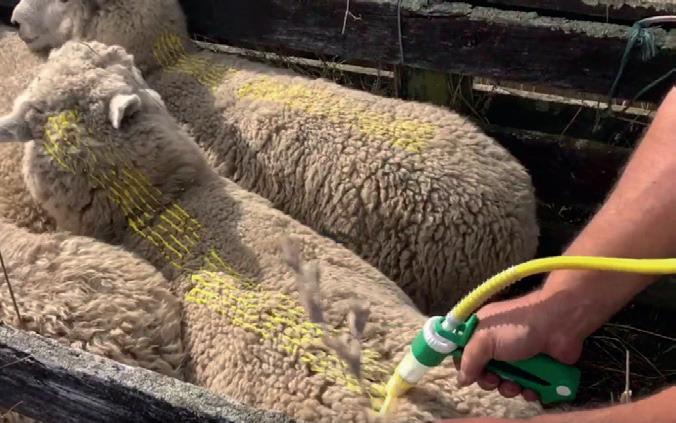
2 minute read
Best practice for flystrike prevention and lice control
Best practise for flystrike prevention and lice control
By late April, flystrike is likely to occur in most unprotected breeds and classes of sheep. Timing of treatment and correct product application plays an important part in preventing or reducing the damage that flystrike causes and stress to flock owners.
Warmer temperatures bring a new generation of flies. After mating, females are attracted to the odour of greasy sheep wool, green dags or urine odour on breech wool. Initial strikes mainly occur in the following areas — shoulder strike from the wool grease odour and bacterial action at the skin level, or dag/urine strike around the base of the tail. Unchecked, these strikes occur with up to 200 eggs deposited by just one female fly. The eggs hatch in less than a day. The larvae develop by moulting, with each larval stage aggressively damaging the skin layer and penetrating the tissue. This is compounded by the attraction of more flies and sheep not previously treated with a flystrike preventative, dying a painful death. Shearing, crutching and/or dagging lambs, two-tooths and ewes in the early summer months alleviates the risk of flystrike. Tell-tale signs of flystruck sheep are biting, twisting and irritation from early larval attack, indicating the need to check the whole mob and use a flystrike dressing treatment on affected sheep after cleaning up the struck areas with a shearing handpiece. Best practice to prevent flystrike is by saturation methods. Jetting or pour-ons with a T-bar applicator
| Best practice to prevent flystrike is by saturation methods.
along the backline and around the breech, preferably with a dual action (fly and lice) combination product. Examples of these are UnlockTM Combination, a saturation/jetting product and UnlockTM Pour-On, a backline/breech application. Both have a dual action for flystrike and lice. Application should be within 4-6 weeks of shearing, when wool length retains the chemical for the claimed protection period on the label. In certain periods of moist and warm weather, particularly in sheltered paddocks or locations where flystrike can be severe, shorter periods may necessitate shorter treatment intervals. One often-used procedure where these conditions prevail with lambs, is to run the lambs through a jetting unit as they leave the race. This should be after drenching lambs with an anthelmintic in the race at 28-day intervals. Another method of ensuring efficient coverage of the backline and breech, is the use of a conveyer to space the sheep as they are jetted or the pour-on applied. The application of a pour-on needs to be meticulous too, with recommended chemical-proof over-trousers — not shorts. Rushing large numbers through the application procedure often leads to some failures in the sheep receiving the correct placement of the chemical. Reading the application rate or the dip mixing rate is important, as is use on the same day of mixed dip wash, as overnight settling-out of the active chemical will markedly reduce the protection benefit. Lastly, take care with jetting and showering to avoid run-off into waterways.
For further information, contact your Farmlands Technical Field Officer or the friendly team at your local Farmlands store.
Article supplied by AHD Ltd










